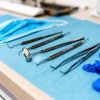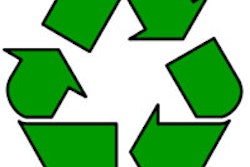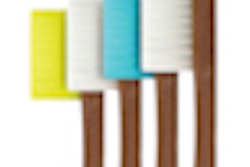
The trend of green practices is growing, but when it comes to infection control products, making patient safety a priority is important.
That's according to Mary Govoni, RDH, MBA, who was speaking at a well-attended and highly interactive session at the recent ADA Annual Session in San Francisco.
"Make sure that you don't make green decisions that may put your patients in jeopardy, because patient safety should come first," Govoni said.
She started the session with a discussion about "carbon footprints" and what it means when a company claims to be carbon-neutral. According to Govoni, if a company says it is carbon-neutral, that doesn't mean it's not producing green house gases in its manufacturing and shipping process. Rather, it implies that it offsets the carbon footprint by planting trees and reforesting areas.
“Patient safety is No. 1 and environmental concern is No. 2.”
Then there are companies that use renewable energy sources, have low-emission delivery systems, and use recyclable packaging. Govoni recommends looking into the products made by these companies and doing business with them.
She also discussed volatile organic compounds (VOCs) -- gases and compounds that are emitted from paint, cleaning supplies, and disinfectants.
"If I am looking at products with green characteristics, the No. 1 thing I will look at are the chemicals in it," Govoni said.
For many products used in dental practice, low VOC or no VOC alternatives are available, she noted. She cautioned against cleaning products that contain acetone, benzene, ethylene, glycol, formaldehyde, methylene chloride, perchloroethylene, toluene, xylene, and 1,3-butadiene, and recommended using phosphate-free detergents and chlorine-free products, as well as those with a chlorine-free manufacturing process.
Govoni also referenced the popular philosophy of "reduce, reuse, and recycle," noting that, of the three, "recycling is perhaps the most impactful thing you can do in the dental office without jeopardizing patient safety."
Infection control products, techniques
Among the key factors that need to be considered when choosing green products is whether product has U.S. Food and Drug Administration (FDA) 510(k) clearance -- particularly for anything used in conjunction with patient treatment and infection control, Govoni noted.
"One of the biggest abuses of that is the use of dishwashers to clean instruments," she said.
The natural disinfectants out there that contain melaleuca (tea tree oil) or grain alcohol often have an Environmental Protection Agency (EPA) registration number. However, if their label cannot claim that the FDA has declared them tuberculocidal, then they should not be used, Govoni stressed.
In a discussion of "green versus safe," she focused on cleaning techniques. Between spraying and wiping, she strongly advocated for the wipe technique, using either wipes or a squirt bottle. Spraying releases the chemicals into the environment, which can then be inhaled by the dental team, damaging their health, she noted.
Govoni also discussed the pros and cons of using disposable or reusable products for various aspects of infection control in the office.
"Barriers and disinfecting are not absolute choices, and in a dental practice usually people do a little bit of both," she explained. "There are some items that are not easy to disinfect, so a barrier makes good sense. Other items can easily be disinfected, and if we use barriers on everything, then we are truly sending a lot more into the landfills than we should."
While discussing barriers such as headrest covers for the dental chair, Govoni said her personal preference was the disposable option because cloth covers are porous and have to be changed after every patient, which adds to the laundry pile. Also, they start to look worn out after multiple uses and patients dislike that, she pointed out.
"Personally, I think the disposables make more sense," she said.
Common sense applies
Govoni also advised using common sense when applying disinfecting measures. For example, some offices cover the entire dental chair with a plastic bag, but Govoni wondered if that is really necessary since the main areas of contamination are the armrest and headrest.
"I am not saying back off from disinfection. I'm just saying be sensible," she said. "Be realistic about the contamination on your chair."
As for disposable versus reusable dental devices such as air/water syringe tips, Govoni again opted for the disposable ones because studies have shown that the reusable ones are very hard to clean properly.
"The early disposable ones on the market were not so good -- they leaked or fell out of the connector -- but the ones on the market now are really good," she said.
As for prophy angles, "that's a toss-up," she added. "For example, if you use the sealed ones, like the ones from Young Dental that are autoclavable, those are good because there can't be any leakage inside."
Govoni also pointed out a few problems with reusable sterilization pouches:
- They don't actually seal shut completely since they feature a fold-over flap.
- Reuse makes them look dingy, which creates a negative impression on patients.
- They can be used a finite number of times, and many times a single use may not be checked off.
"The margin of error is too wide," she said.
In the end, patient safety must always take precedence over adopting green measures, Govoni reiterated. She concluded with some measures that can be taken to create a more green office without comprising safety:
- Don't spray; wipe instead.
- Research products to see if the company is carbon-neutral and the packaging, etc. is environmentally friendly (PureLifedental.com is a good resource to seek out green products and supplies for the dental office, she noted).
- Recycle metals, plastics, glass, paper, and basically anything that can be recycled. (If you don't know where certain waste can be recycled, Earth911.com is a good resource -- you enter a ZIP code and what you want to recycle, and the site finds the closest appropriate recycling facility. iRecycle, an android and iPhone app, is helpful in the same way, Govoni noted).
- Recycle lead foil if you are using traditional x-ray film.
- Use energy-efficient lighting and replace as many light bulbs as you can to light-emitting diode (LED) lights.
"I hope that the message you got here is that patient safety is No. 1 and environmental concern is No. 2," Govoni concluded. "We do the best we can."



















